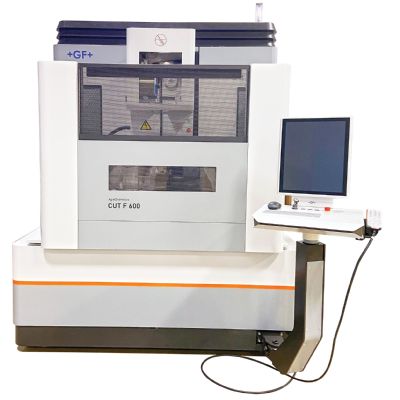 Peter Ulintz
Peter UlintzCalculating Cutting and Drawing Forces
December 1, 2009Comments
Question: I am a die designer for a company that specializes in deep-drawn products. Our methods are a bit old, but simple. We use rules of thumb and no finite-element analysis.
From my die design handbooks I use two formulas, but I’m not sure if they are right. The first is the pressure (force) needed to draw a round shell. We use the following:
F_draw = C x t x S, where C is the mean circumference of the shell diameter, t is the stock thickness and S is the material tensile strength. My concern is the fact that this formula does not take into account how big the draw reduction is, so the pressure needed to draw a 42-percent reduction would be the same as that required to draw a 13-percent reduction. Is there a better formula?
The second relates to piercing pressure. The formula we use:
F_pierce = C x t x S, where C is the blank circumference, t is thickness and S is the shear strength, which I normally use as 80 percent of tensile strength.
I want to predict when a draw reduction is severe that the bottom of the component will fracture because F_draw is bigger than F_pierce.
A: Let’s separate your question into two parts: drawing forces and blanking forces. We’ll discuss drawing forces first.
For simple cup drawing, maximum punch load occurs when the draw conditions cause the cup wall to tear. The main restriction in the cup-drawing process is the amount of compression, bending, unbending and friction loads the punch develops before the cup wall fails in tension. Of the four loads, compression of the material (in the flange) is the greatest.
The generally accepted formula for predicting the maximum punch load is:
F = Spdt, where F is the maximum punch force in pounds, S is the nominal tensile strength of the material being drawn (psi), d is the punch or cup diameter and t is the blank thickness. Thus, the force equals pressure times the cross-sectional area of the cup wall.
The resulting drawing force cannot be used as failure criteria for cup drawing. Drawing failures are influenced by punch-nose radius, die radius, interface friction, blankholder pressures, work hardening rates and other parameters.
The limiting draw ratio (LDR), also known as the “percent reduction” method, is better for assessing the drawing limits of cups. LDR is the ratio of maximum blank diameter to punch diameter, and can be evaluated using a standard laboratory test method. Blanks of known diameters are positioned in the tool set and drawn into 4-in.-dia. cups. The blank diameter is increased in small increments until failure. The LDR is calculated by dividing the maximum blank diameter by the punch diameter.
For more information, reference my March 2007 column.
Your formula for cutting pressure seems appropriate for mild steel, providing the die steels are sharp and engineered die clearances have been applied. Obtaining accurate shear stress data can be difficult; thus, approximations are commonly used. The approximate shear strength of mild steel is 70 to 80 percent of the ultimate tensile strength. Shear strengths will differ between materials. The shear strengths for copper, for example, can be between 50 and 90 percent, depending on alloy. Regardless of the alloy, if dull edges and large cutting clearances are used in the die, shear strength begins to approach the nominal tensile strength of the material. MF
View Glossary of Metalforming Terms
Technologies: Tooling








 Video
Video